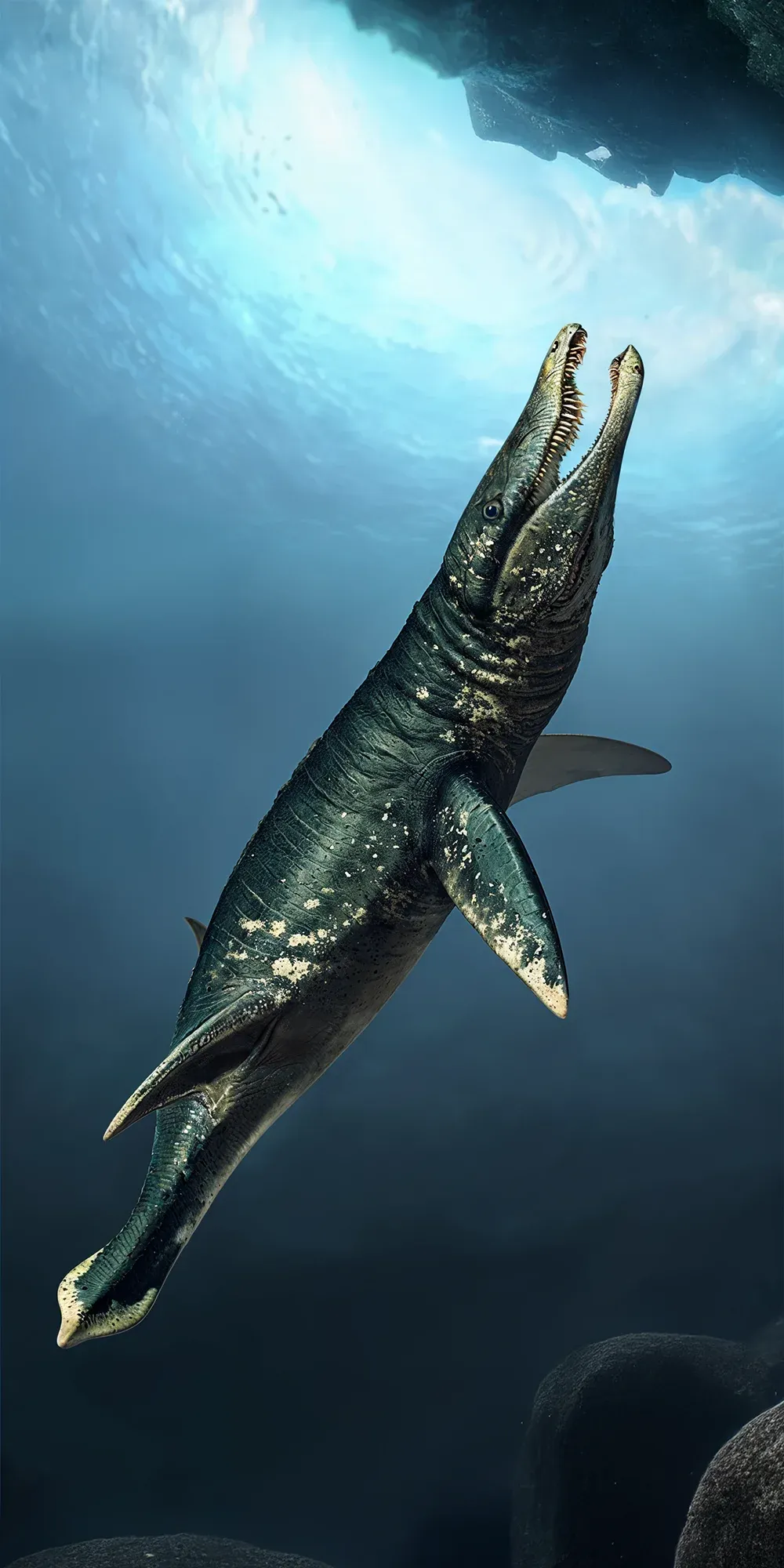The Pliosaurus
Pliosaurus, also known as the "predator of the Jurassic seas," was a large marine reptile that lived during the Late Jurassic period. These apex predators had a powerful bite force, short necks, long flippers, and streamlined bodies, allowing them to be efficient hunters in the ocean. They could grow up to 40 feet in length and weigh several tons.

| Pliosaurus | |
|---|---|
| Size | Up to 40 feet (12 meters) |
| Weight | Varies, up to several tons (metric units vary) |
| Speed | 15-20mph (24-32km/h) |
| Key Strength | Jaw strength |
| Biggest Weakness | Mobility |
| Scientific Name | Pliosaurus |
| Family | Pliosauridae |
| Habitat | Marine |
| Geography | Global distribution in Jurassic seas |
| Diet | Giant squids, other marine reptiles |
| Lifespan | 30 years - 40 years |

The Pliosaurus
Pliosaurus, also known as the "predator of the Jurassic seas," was a large marine reptile that lived during the Late Jurassic period. These apex predators had a powerful bite force, short necks, long flippers, and streamlined bodies, allowing them to be efficient hunters in the ocean. They could grow up to 40 feet in length and weigh several tons.
Fun Fact: Pliosaurus had one of the strongest bite forces of any animal in history, making them formidable predators in the ancient seas.
| Pliosaurus | |
|---|---|
| Size | Up to 40 feet (12 meters) |
| Weight | Varies, up to several tons (metric units vary) |
| Speed | 15-20mph (24-32km/h) |
| Key Strength | Jaw strength |
| Biggest Weakness | Mobility |
| Scientific Name | Pliosaurus |
| Family | Pliosauridae |
| Habitat | Marine |
| Geography | Global distribution in Jurassic seas |
| Diet | Giant squids, other marine reptiles |
| Lifespan | 30 years - 40 years |
Pliosaurus Matchups
We use AI to simulate matchups between the Pliosaurus and other animals. Our simulation considers size, strength, and natural predatory behaviors to determine the most likely outcome.
Pliosaurus: Diet, Predators, Aggression, and Defensive Behaviors
What did Pliosaurus eat?
Pliosaurus were apex predators that primarily fed on large marine reptiles and fish. Their diet consisted of plesiosaurs, ichthyosaurs, and other marine creatures found in the oceans during the Jurassic period. With their powerful jaws and sharp teeth, Pliosaurus were able to easily catch and devour their prey.
Did Pliosaurus have any predators?
As apex predators themselves, Pliosaurus did not have natural predators that posed a significant threat to them. Their large size, powerful jaws, and predatory nature allowed them to dominate the oceans and fend off any potential threats from other marine predators.
Were Pliosaurus aggressive?
Pliosaurus were known for their aggressive behavior, especially when hunting or defending their territory. They were fearless predators that used their massive size and strength to overpower their prey. Their aggressive nature and dominance in the oceans made them formidable predators during the Jurassic period.
Did Pliosaurus fight?
Pliosaurus were known to engage in territorial disputes and fights with other predators over food or mates. They used their powerful jaws and teeth to intimidate rivals and establish dominance in their territory. These fights could be fierce and often ended with one Pliosaurus asserting its dominance over the other.
How did Pliosaurus defend themselves?
Pliosaurus primarily relied on their size, strength, and powerful jaws to defend themselves against potential threats. They were skilled predators that used their speed and agility to evade danger when necessary. Additionally, their thick skin and camouflage patterns helped them blend into their environment and avoid detection by predators.
What was their biggest weakness in a fight?
Despite their formidable size and strength, one of the biggest weaknesses of Pliosaurus in a fight was their need for oxygen. As marine reptiles, Pliosaurus had to surface periodically to breathe air, leaving them vulnerable to attacks from predators while at the surface. This reliance on air made them susceptible to ambushes and attacks from faster and more agile marine creatures.
Fun Fact: Some species of Pliosaurus had incredibly large skulls, reaching lengths of 10 feet or more, filled with sharp teeth perfect for tearing through prey.
Fun Fact: Pliosaurus is one of the best-known marine reptiles of the Mesozoic era, with fossils found in Europe, North America, and South America.










